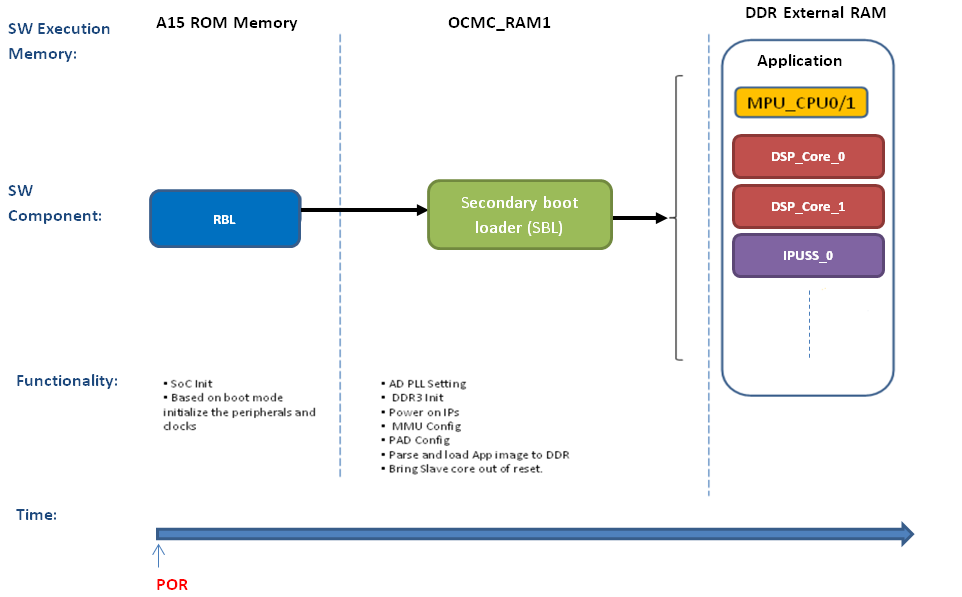Tool/software: TI-RTOS
Hello,
I have several questions how to create applications of DSP on AM5728 with TI-RTOS.
1.In multi core systems (A15 x 2 and C66x x2), should TI-RTOS run on each core individually?
Or does only one TI-RTOS on a A15 control the task on the others core?
2.Does the same application run on the each C66x core?
My customers want to know whether they should create the individual application for each C66x core.
For example, they are concerned about the addressing of the interrupt vector and function.
3.Please let me know the boot up sequence in multi core systems.
I check the following wiki; however, I cannot understand the detail boot up sequence.
processors.wiki.ti.com/.../Processor_SDK_RTOS_BOOT_AM57x
After the reset signal of DSP is released, what and how to execute the application on C66x?
Best Regards,
Nomo



